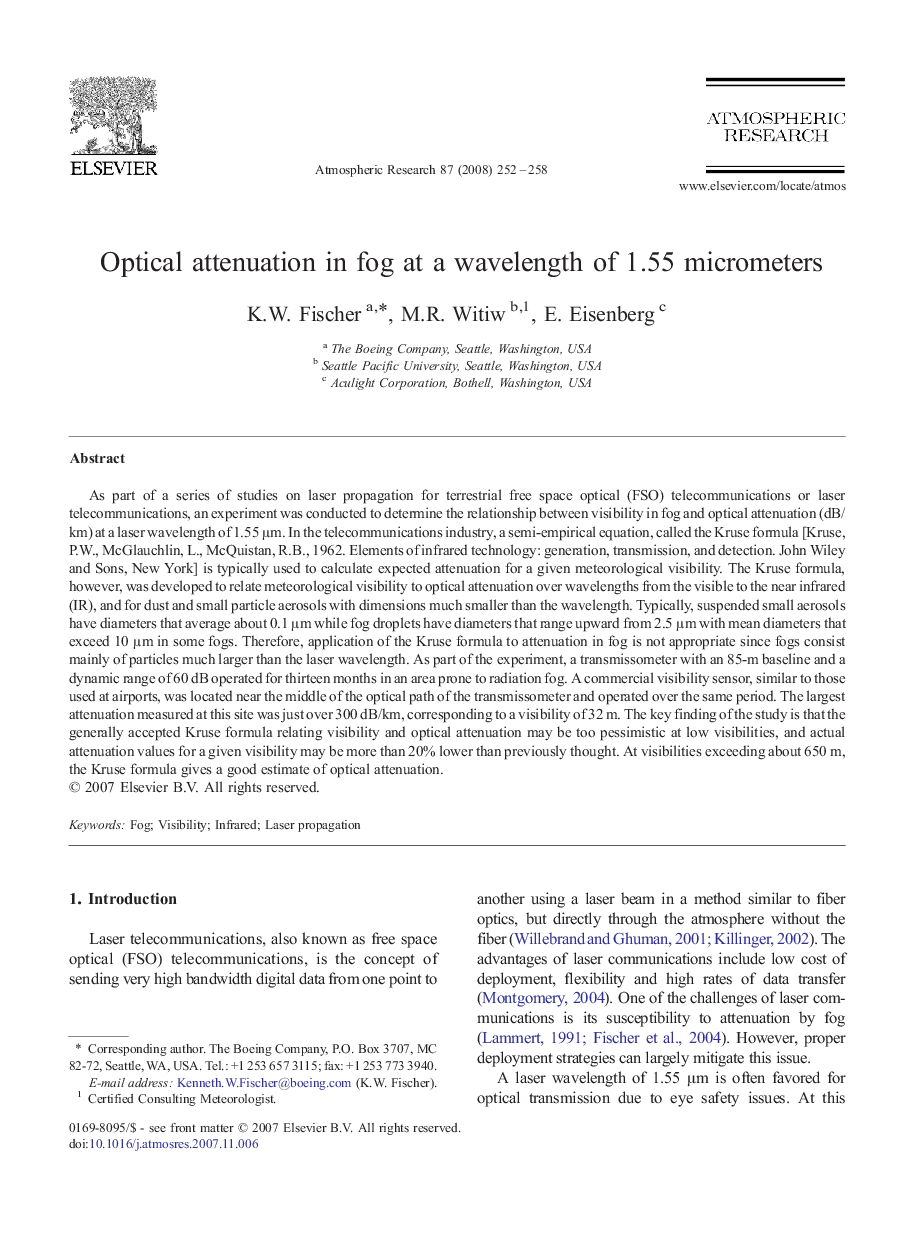| کد مقاله | کد نشریه | سال انتشار | مقاله انگلیسی | نسخه تمام متن |
|---|---|---|---|---|
| 4451176 | 1620574 | 2008 | 7 صفحه PDF | دانلود رایگان |

As part of a series of studies on laser propagation for terrestrial free space optical (FSO) telecommunications or laser telecommunications, an experiment was conducted to determine the relationship between visibility in fog and optical attenuation (dB/km) at a laser wavelength of 1.55 μm. In the telecommunications industry, a semi-empirical equation, called the Kruse formula [Kruse, P.W., McGlauchlin, L., McQuistan, R.B., 1962. Elements of infrared technology: generation, transmission, and detection. John Wiley and Sons, New York] is typically used to calculate expected attenuation for a given meteorological visibility. The Kruse formula, however, was developed to relate meteorological visibility to optical attenuation over wavelengths from the visible to the near infrared (IR), and for dust and small particle aerosols with dimensions much smaller than the wavelength. Typically, suspended small aerosols have diameters that average about 0.1 μm while fog droplets have diameters that range upward from 2.5 μm with mean diameters that exceed 10 μm in some fogs. Therefore, application of the Kruse formula to attenuation in fog is not appropriate since fogs consist mainly of particles much larger than the laser wavelength. As part of the experiment, a transmissometer with an 85-m baseline and a dynamic range of 60 dB operated for thirteen months in an area prone to radiation fog. A commercial visibility sensor, similar to those used at airports, was located near the middle of the optical path of the transmissometer and operated over the same period. The largest attenuation measured at this site was just over 300 dB/km, corresponding to a visibility of 32 m. The key finding of the study is that the generally accepted Kruse formula relating visibility and optical attenuation may be too pessimistic at low visibilities, and actual attenuation values for a given visibility may be more than 20% lower than previously thought. At visibilities exceeding about 650 m, the Kruse formula gives a good estimate of optical attenuation.
Journal: Atmospheric Research - Volume 87, Issues 3–4, March 2008, Pages 252–258